
10 Key Insights on Plastic Channeling for OEM Purchasing Managers
Overview
This article dives into the world of plastic channeling, specifically aimed at OEM purchasing managers. Why is this important? Well, plastic channels play a crucial role across various industries, and understanding their benefits can really make a difference in your sourcing decisions.
Let’s talk about what makes plastic channels stand out. They’re durable, customizable, and easy to install—who wouldn’t want that? Plus, we’ll walk you through the production process and the quality control measures in place to ensure high standards. This information is key for purchasing managers looking to make informed choices.
Now, you might be wondering how all this applies to your day-to-day work. By the end of this article, you’ll have a clearer picture of how plastic channeling can fit into your projects. So, let’s get started and explore these insights together!
Introduction
In the ever-changing world of manufacturing, it’s hard to overstate the importance of plastic channeling—especially for OEM purchasing managers who are navigating some pretty complex sourcing decisions. This article dives into ten key insights that highlight the benefits and applications of plastic channels. We’ll show you how these versatile components can boost operational efficiency and safety across various industries. But with challenges like fluctuating raw material prices and tightening environmental regulations, you might be wondering: how can OEMs tap into innovative solutions to stay ahead in this competitive landscape?
Lincoln Plastics: Custom Profile Extrusion for Plastic Channels
Have you ever faced challenges when sourcing custom components for your projects? Well, Lincoln's leading manufacturer has got you covered! They specialize in custom profile extrusion for synthetic channels and plastic channeling, focusing on excellence and prioritizing customers.
With a focus on personalization, this firm crafts a range of synthetic components tailored to meet the unique needs of OEMs. Their expertise in extrusion molding means they create products, such as plastic channeling, that boost operational efficiency and reliability across various applications, from irrigation to cable management.
Located in Nebraska, they use advanced production methods and follow ISO 9001:2015 certified procedures to ensure top-notch quality. This commitment to quality management, along with their customized solutions in polyethylene, PVC, and polypropylene, makes them a dependable partner in the extrusion industry. So, why not reach out and see how they can help you with your next project?
Understanding Plastic Channels: Definition and Applications
Have you ever thought about how plastic channeling can make a difference in managing materials like cables and fluids? These specialized components are super handy in industries such as construction, telecommunications, and agriculture. You’ll find them in everything from irrigation systems to electrical installations, helping to organize and protect critical components.
Now, let’s talk about Lincoln Plastics’ innovative Flexiduct flexible cord management solutions. They really show how tailored extrusion profiles can boost workplace safety and productivity. By effectively managing cords and cables, they help reduce hazards, creating a safer environment for everyone.
Understanding the various applications of plastic channeling can be a game-changer for OEM purchasing managers. It enables them to pinpoint the right solutions for their specific operational needs, ensuring both safety and efficiency. So, why not explore these options and see how they can benefit your operations?

Types of Plastics Used in Plastic Channel Manufacturing
You know, when it comes to making channels, plastic channeling involves various types of polymers like PVC, polyethylene, and polypropylene. PVC is pretty rigid and stands up well against chemicals, making it a go-to for outdoor projects. On the other hand, polyethylene brings flexibility and impact resistance, which is perfect for those tough environments. And let’s not forget about polypropylene; it’s lightweight and resists fatigue, so it’s often chosen when saving weight is crucial.
At Lincoln Plastics, we’re all about offering flexible profiles tailored just for you, including co-extruded options. This way, OEM purchasing managers like yourself can pick the material that fits your needs best. Now, if you’re looking for something innovative, our Flexiduct product is a great solution for flexible cord management. It not only boosts workplace safety and productivity but also reflects our commitment to reliable, on-time delivery and assurance. So, why not explore what we have to offer?

Production Process of Plastic Channels: Key Steps
Let’s dive into how synthetic channels are made! The production process typically involves a few key steps:
- Material selection
- Extrusion
- Cooling
- Cutting
- Quality inspection
First off, the right synthetic material is chosen based on the desired characteristics, making sure it meets OEM specifications.
Next up is the extrusion process, where we shape the plastic channeling into the desired profile. Precision is key here, as we focus on getting those critical dimensions just right. After extrusion, the channels are cooled down to solidify their shape before being cut to the specified lengths.
Now, you might be wondering about quality. The company has a solid assurance system in place, complete with dedicated plans and thorough inspections. This ensures that the channels not only meet industry standards but also align with customer specifications. It’s all about making sure OEMs receive top-notch products that fit and work just as they should. So, next time you think about plastic channeling, remember the careful process behind its creation!
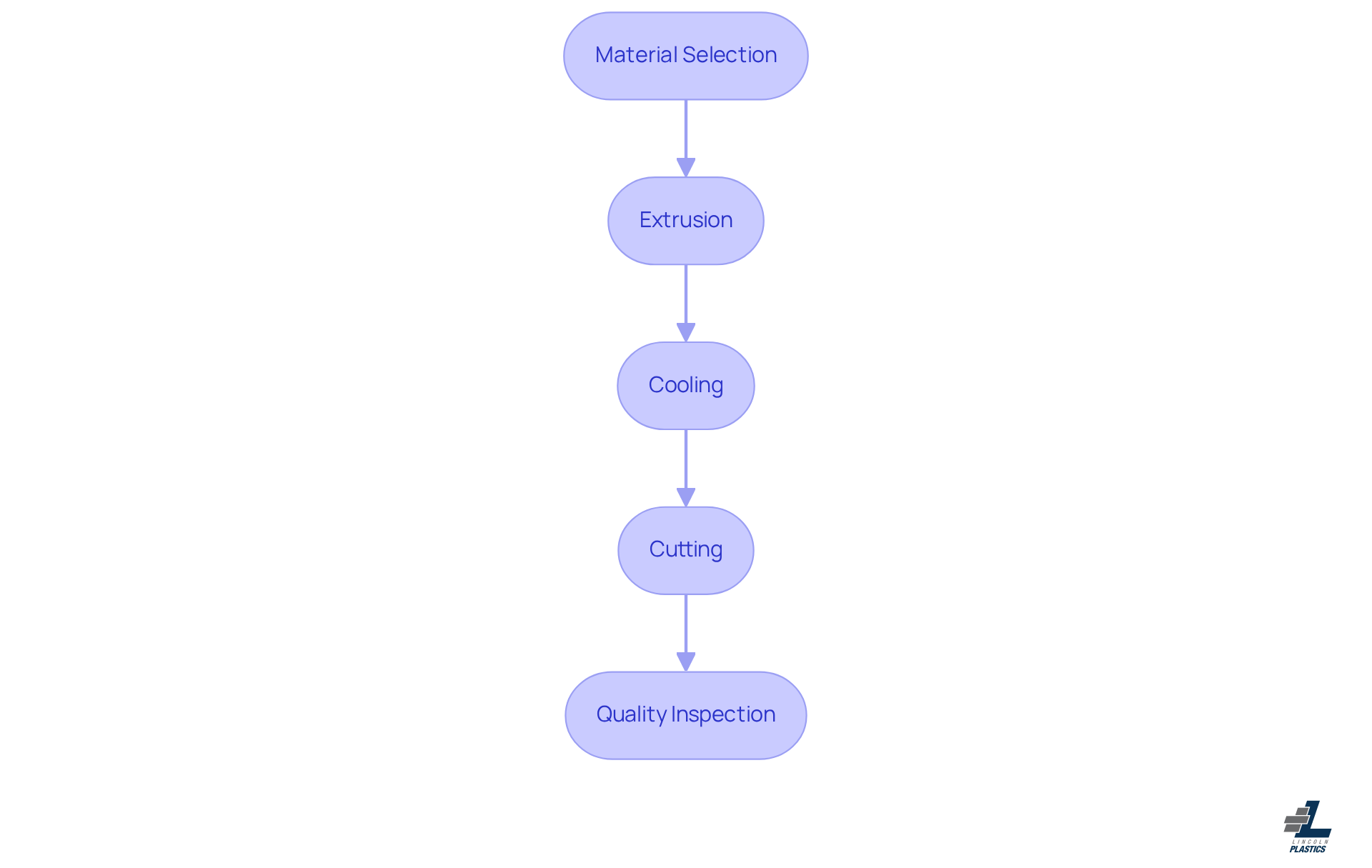
Top Manufacturers of Plastic Channels: Industry Leaders
When it comes to synthetic channels, some top producers really stand out. These companies are known for their custom solutions and strict quality assurance. They work closely with OEMs to ensure their products meet all the necessary standards, including specific checks for fit and function. Each polymer profile even has its own quality book, packed with important in-process checks and documentation.
This commitment to precision and personalization makes them reliable partners in the industry, right alongside other leaders like Southwire and Legrand. So, if you’re an OEM purchasing manager, understanding what these manufacturers bring to the table can really help you navigate your sourcing options. It’s all about finding dependable partners for your projects, right?
Next time you’re exploring options, think about how these companies can support your needs. After all, choosing the right partner can make all the difference!
Quality Control in Plastic Channel Production: Ensuring Standards
When it comes to the production of plastic channeling at Lincoln Plastics, quality control is key. We know that ensuring your products meet high standards is crucial, so we conduct rigorous testing and inspection at every stage of the manufacturing process. This means checking material properties, dimensional accuracy, and overall product integrity. As an ISO 9001 certified producer, we stick to strict control measures to guarantee consistent quality and reliability.
Now, let’s dive a bit deeper. Our robust quality system includes dedicated quality plans for each polymer profile, ensuring they meet all specifications and requirements. By implementing these thorough standards, we can confidently say that our synthetic channels, specifically plastic channeling, will perform effectively in their intended applications. This gives peace of mind to OEM purchasing managers like you.
And there’s more! We also offer international shipping solutions, making it easier for clients around the globe to access our high-quality rigid profiles. So, if you’re looking for reliable polymer channels, you’ve come to the right place!
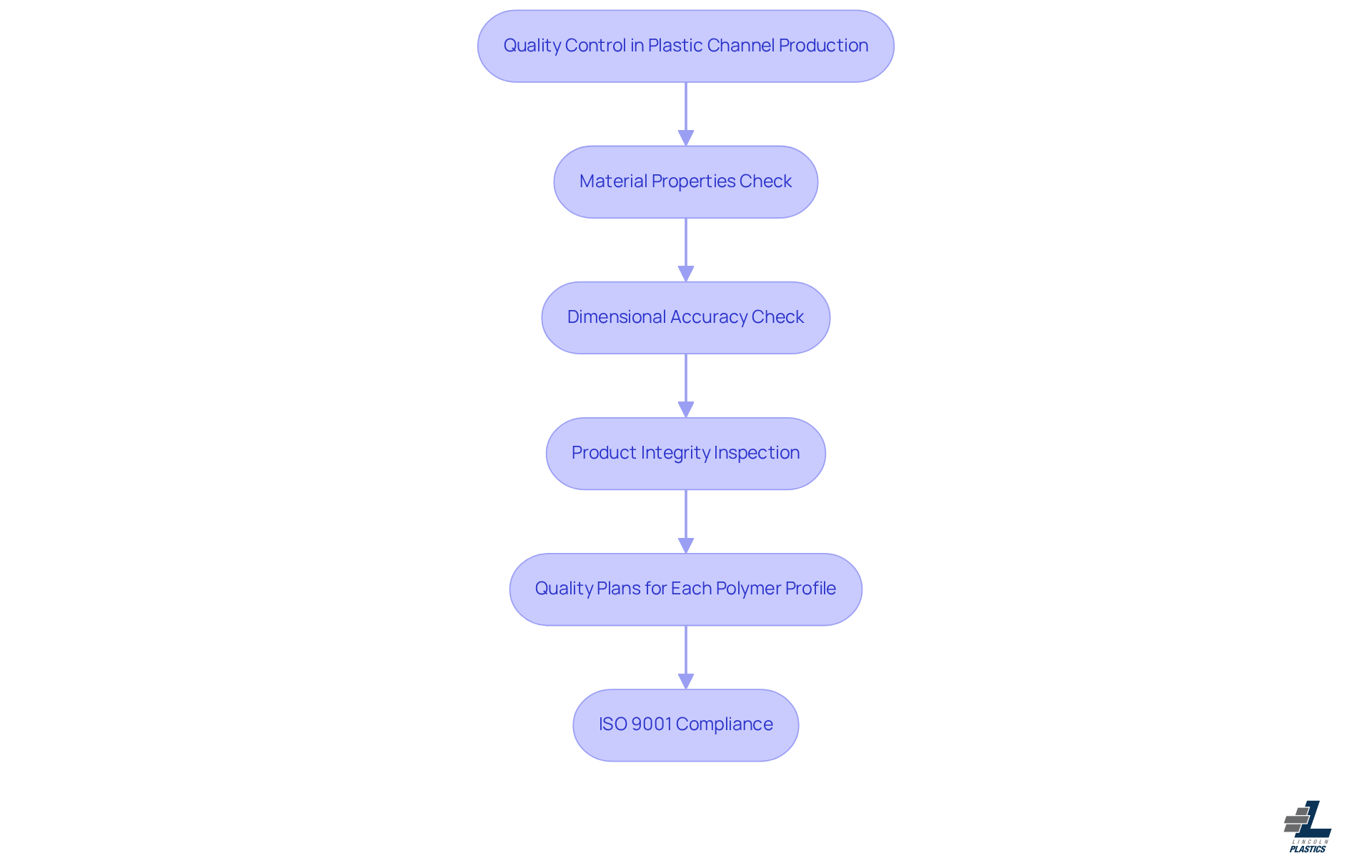
Benefits of Plastic Channels: Why They Matter
Hey there! Have you ever thought about how managing cables and fluids can be a bit of a hassle? Well, plastic channeling might just be the solution you need. They come with a bunch of perks like being super durable, lightweight, and resistant to corrosion and chemicals. Plus, plastic channeling is easy to install and maintain, which is always a win, right?
Now, let’s talk about Lincoln Plastics' Flexiduct. It’s individually packaged in 6-foot pre-split lengths, making it super convenient for you. Imagine how easy that makes your life! And if you’re looking for something that fits your unique design needs, synthetic channels are totally customizable. This flexibility is a game-changer for OEMs.
With all these advantages, it’s no wonder that plastic channeling is essential in industries such as telecommunications, manufacturing, and construction. They help keep operations running smoothly and reliably. So, why not consider adding them to your toolkit? You’ll be glad you did!
Challenges in the Plastic Channeling Industry: Key Issues
You know, the industry of plastic channeling faces its fair share of challenges. Fluctuating raw material prices, environmental regulations, and competition from alternative materials can really keep producers on their toes. Plus, there’s the constant need to come up with fresh ideas to meet changing customer demands and maintain standards.
At Lincoln Plastics, we’re all about tackling these challenges head-on through innovative plastic channeling. We work closely with OEMs to ensure our products meet all the necessary standards, including special checks for ‘fit and function.’ It’s all part of our strong assurance system, which includes essential in-process checks and run documentation. This way, we’re all about precision in production.
But here’s the thing: our commitment to quality doesn’t just help us keep production costs and timelines in check. It also empowers OEM purchasing managers to make informed sourcing decisions that really align with their quality standards. So, if you’re in the industry, how do you ensure you’re meeting those ever-evolving needs?
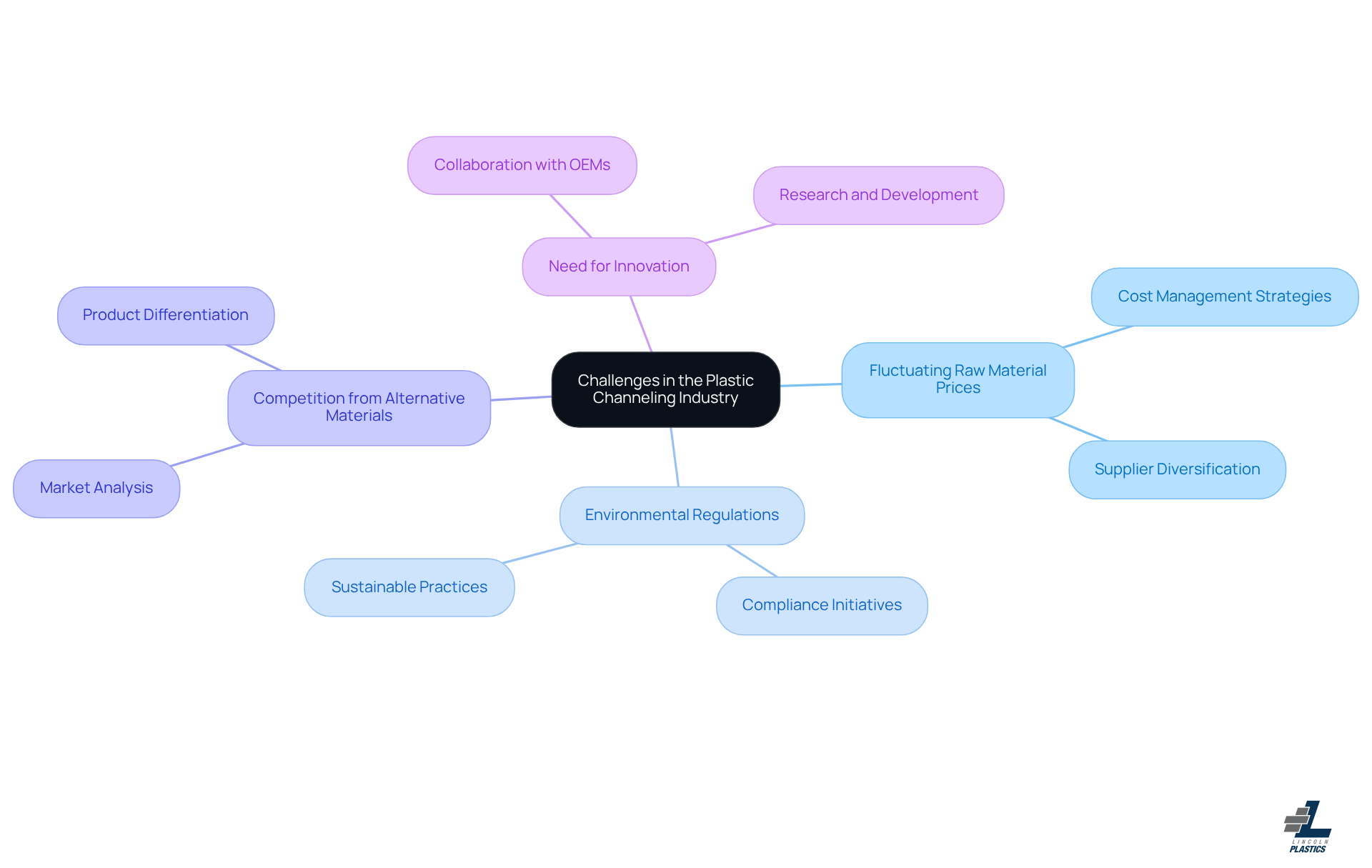
Innovative Trends in Plastic Channeling: What's New
Have you noticed the recent buzz around eco-friendly materials and advanced manufacturing techniques, like 3D printing? Producers are really stepping up their game when it comes to sustainability. They're finding ways to use recycled materials and cut down on waste during manufacturing. Plus, smart technology is making its mark, allowing for better monitoring and management of cable systems.
Now, let’s talk about Flexiduct. This innovative flexible cord management solution is designed to boost workplace safety and productivity. Each piece comes individually packaged in 6’ pre-split lengths, making it super easy for businesses to install tailored extrusions for custom flexible cord covers. It’s a straightforward way to keep cords and cables organized.
These innovations aren’t just cool; they offer exciting opportunities for OEMs to enhance their operations while also reducing their environmental impact. So, why not explore these options and see how they can work for you?
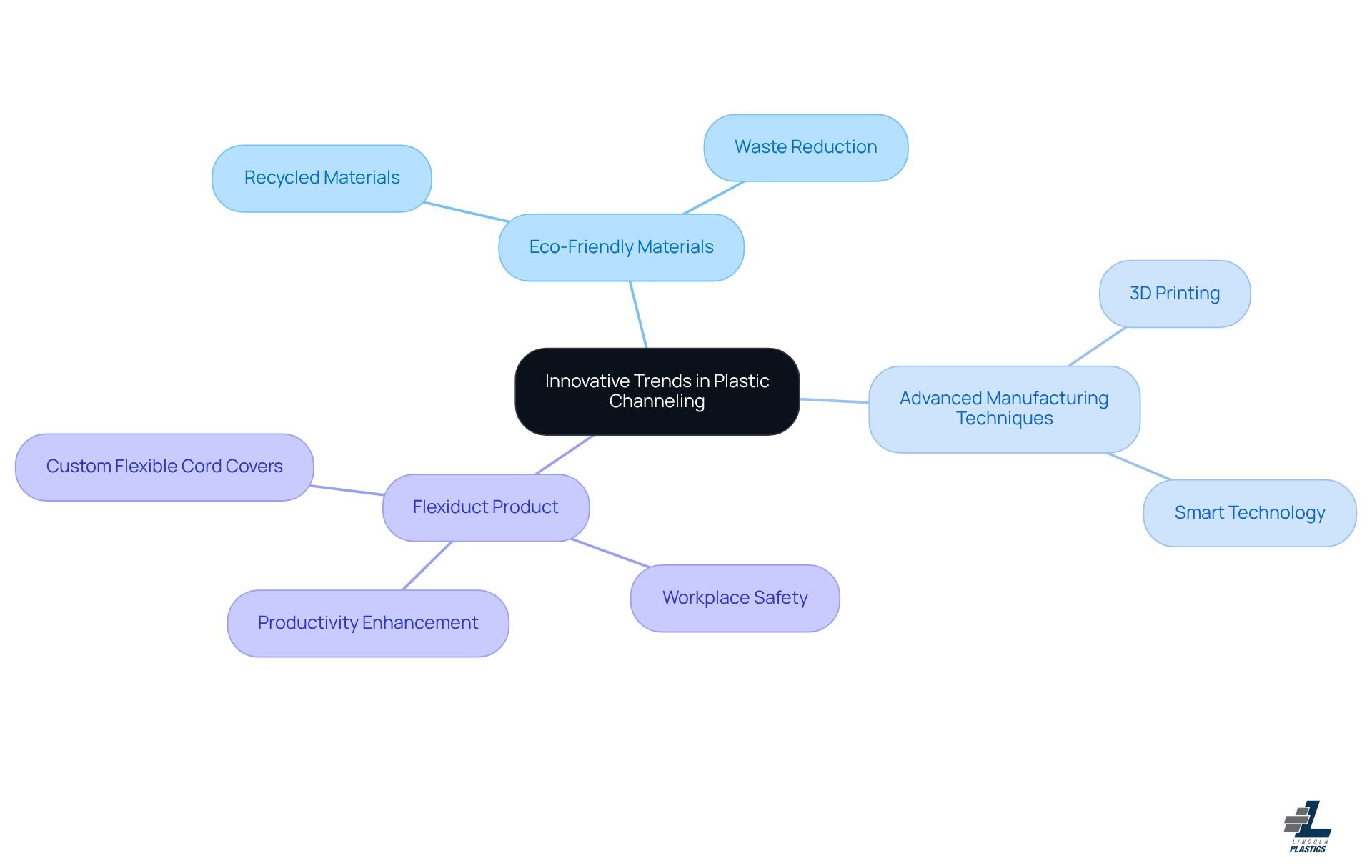
Essential Facts About Plastic Channeling: A Summary
In summary, synthetic channels are pretty crucial in various industries. They offer durability, customization, and ease of installation—what's not to love? The main materials used in making them include PVC, polyethylene, and polypropylene, each bringing its own unique properties to the table.
Now, let’s talk about Lincoln Plastics. This company is an expert manufacturer certified to the ISO 9001 standard, which means they really know how to keep quality in check throughout the production process. Plus, they have the capabilities for international shipping and a solid commitment to on-time delivery. So, if you're an OEM purchasing manager, you can count on them for dependable rigid extrusion solutions tailored to your specific needs.
As the industry keeps evolving, staying informed about trends, challenges, and innovations is key. This knowledge will empower you to confidently navigate the landscape of plastic channeling. So, what are you waiting for? Dive in and explore the possibilities!
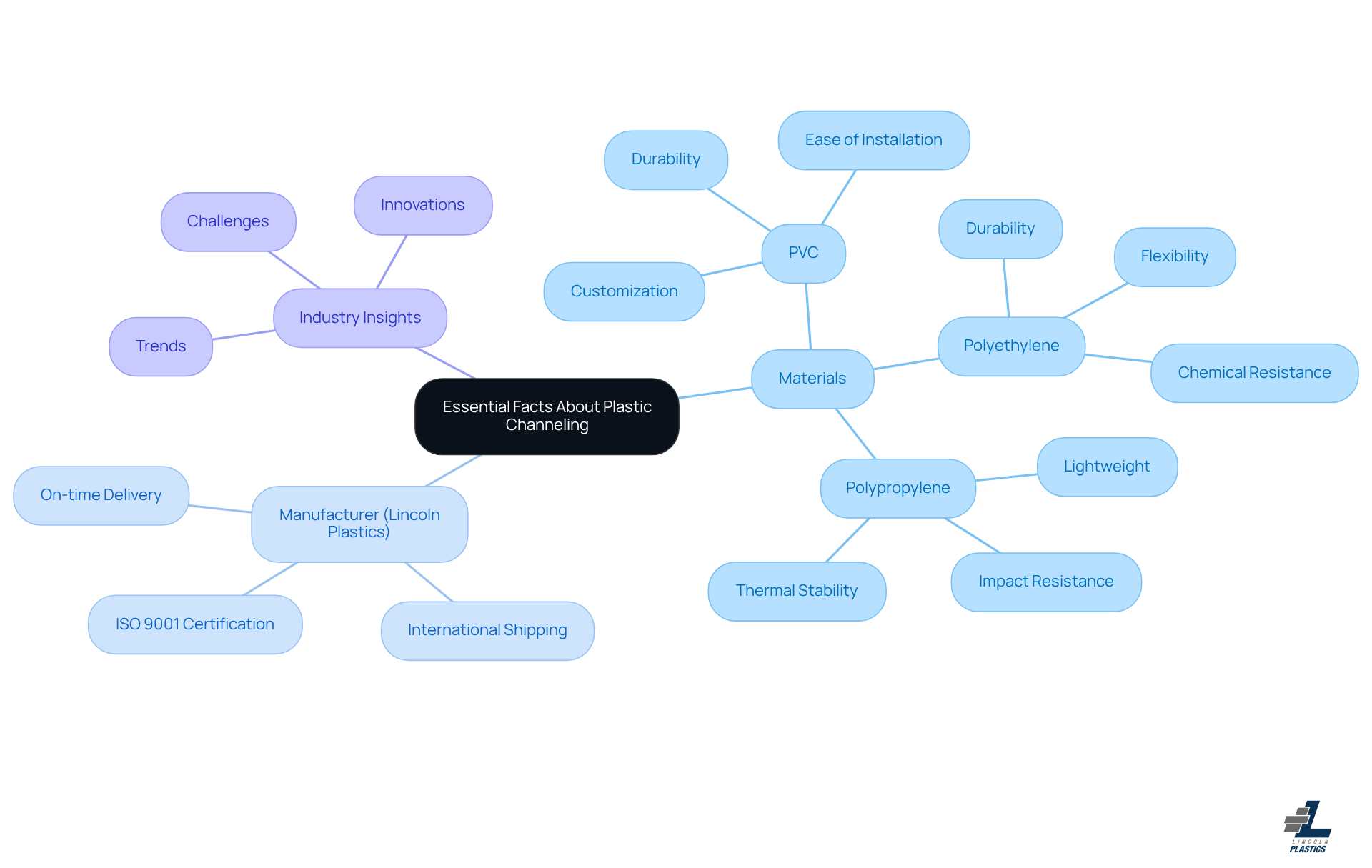
Conclusion
The insights shared here really shine a light on how crucial plastic channeling is across various industries, especially for OEM purchasing managers. By getting to know the unique properties and uses of different plastics—like PVC, polyethylene, and polypropylene—purchasing managers can make smart choices that boost operational efficiency and safety in their projects. And let’s not forget Lincoln Plastics, a standout partner that offers tailored solutions and a solid commitment to quality, backed by ISO 9001 certification.
Now, let’s talk about some key points from the article. It emphasizes the importance of:
- Quality control
- Innovative production processes
- How adaptable plastic channels are to meet the ever-changing needs of the industry
The challenges in the plastic channeling sector, such as:
- Fluctuating raw material prices
- Environmental regulations
really highlight why manufacturers need to keep innovating and uphold high standards.
As the industry keeps evolving, embracing new technologies and sustainable practices is going to be essential for OEM purchasing managers. Exploring the perks of plastic channeling not only helps streamline operations but also plays a role in creating a safer and more efficient working environment. Engaging with trusted manufacturers like Lincoln Plastics can really empower OEMs to tackle the complexities of sourcing while ensuring they meet their specific needs. The future of plastic channeling is looking bright, and there’s no better time than now to dive into these opportunities.
Frequently Asked Questions
What does Lincoln Plastics specialize in?
Lincoln Plastics specializes in custom profile extrusion for synthetic channels and plastic channeling, focusing on creating tailored components to meet the unique needs of OEMs.
What industries benefit from plastic channeling?
Plastic channeling is beneficial in various industries, including construction, telecommunications, and agriculture, where it helps manage materials like cables and fluids.
How does Lincoln Plastics ensure product quality?
Lincoln Plastics follows ISO 9001:2015 certified procedures and employs advanced production methods to ensure top-notch quality in their products.
What types of plastics are used in manufacturing plastic channels?
The types of plastics used include PVC, polyethylene, and polypropylene, each offering different properties suitable for various applications.
What are the advantages of using PVC in plastic channeling?
PVC is rigid and resistant to chemicals, making it ideal for outdoor projects.
What benefits does polyethylene provide in plastic channeling?
Polyethylene offers flexibility and impact resistance, making it suitable for tough environments.
Why is polypropylene chosen for certain applications in plastic channeling?
Polypropylene is lightweight and resists fatigue, making it a preferred choice when weight savings are crucial.
What innovative solution does Lincoln Plastics offer for cord management?
Lincoln Plastics offers the Flexiduct product, which provides flexible cord management solutions that enhance workplace safety and productivity.
How can OEM purchasing managers benefit from understanding plastic channeling applications?
By understanding the various applications of plastic channeling, OEM purchasing managers can identify the right solutions for their operational needs, ensuring safety and efficiency.


